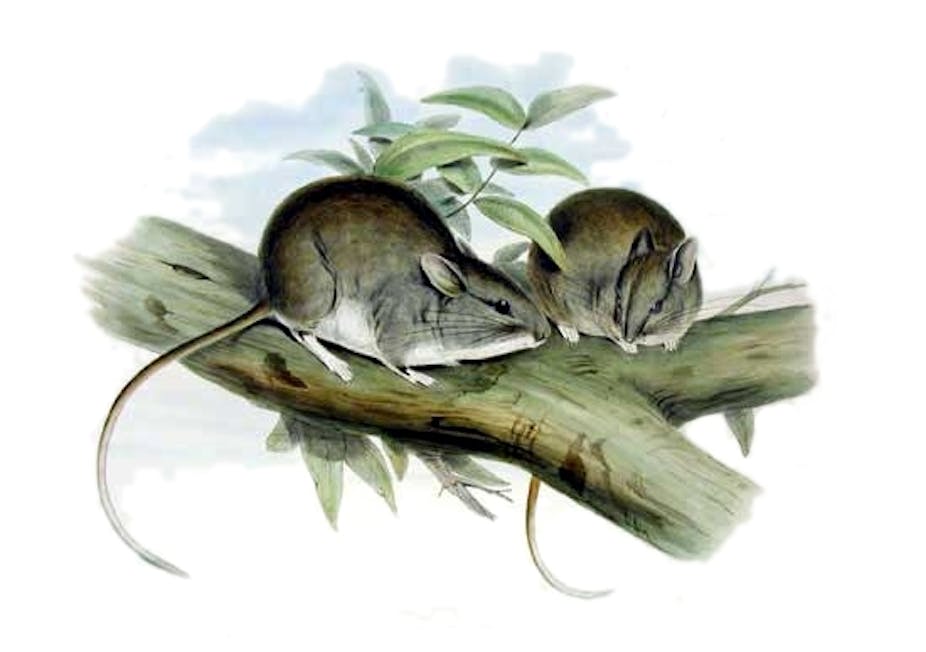Australia has the world’s worst mammalian extinction records. Since 1788, 21 species have gone extinct in Australia and its territories. This includes 10 rodents, mostly from the arid interior. As with most Australian extinctions, the culprits are predation by foxes and cats, changes in fire regimes, and landscape modification caused by grazing by sheep, cattle and rabbits.
The Lesser Stick-nest rat or Djooyalpi (Leporillus apicalis) is possibly one of those mammalian casualties. The last recorded specimen was collected in 1933 near Mount Crombie in the Anangu Pitjantjajara Lands of South Australia.
It is smaller and more lightly built than the (definitely) extant Greater Stick-nest Rat. Like its larger relative, it gets its name from the stick mounds it constructs around bushes.
Status
The Lesser Stick-nest Rat has had an unusual listing history in the IUCN red list. In 2008, its status was changed from Extinct to Critically Endangered (Possibly Extinct). This was done as although no confirmed reports of this species have been made since 1933, there is one reliable report of a living rat in 1970, and there are continual occasional reports of fresh vegetation being added to old Lesser Stick-nest Rat mounds. Its former distribution also includes very remote areas of arid Australia, which have been little surveyed, and hence making a definite declaration of Extinct near impossible.
Threats
As it is uncertain whether it is actually extinct, it is difficult to pinpoint a cause of decline. However, as with other small mammals of the arid interior, species introduced by Europeans are probably to blame.
Strategy
There is no current conservation strategy for the Lesser Stick-nest Rat. If it still survives, reduction of cats, foxes and rabbits through targeted baiting may be beneficial. A better solution may be to encourage the conservation of dingoes, as they have been shown to benefit arid zone rodents through their suppression of foxes.
Targeted biodiversity surveys, especially with Aboriginal involvement, are really required to determine the status of the Lesser Stick-nest Rat. Conservation projects need scientific research in order to be successful.
Conclusion
Although not officially reported since 1933, there is a glimmer of hope that the Lesser Stick-nest Rat stills lives in arid Australia. If it is truly extinct, then its plight serves as a warning about the fate of Australia’s mammalian fauna without adequate conservation and research actions.
The Conversation is running a series on Australian endangered species. See it here.

